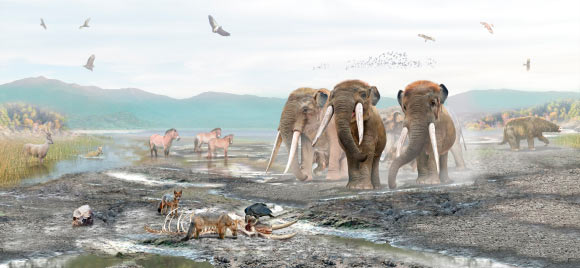Most megafaunal herbivores in the Americas went extinct around 10,000 years ago, presumably disrupting the long-distance seed dispersal of large, fleshy-fruited plant species. Proposed in 1982, the neotropical anachronism hypothesis suggests that large fruits evolved to attract now-extinct megafauna. While this explains many key adaptations of ‘megafaunal fruit’ plants, it lacks robust evidence. In new research, researchers from Chile, Spain and Brazil discovered fossil evidence for frugivory in an extinct South American proboscidean called Notiomastodon platensis, and found that the disappearance of this animal and its relatives increased the extinction risks for megafaunal fruit plants in regions across South America.

“In 1982, biologist Daniel Janzen and paleontologist Paul Martin proposed a revolutionary idea: many tropical plants developed large, sweet, and colorful fruits to attract large animals — such as mastodons, native horses, or giant ground sloths — that would serve as seed dispersers,” said Dr. Erwin González-Guarda, a paleontologist at the University of O’Higgins and IPHES-CERCA, and his colleagues.
“Known as the neotropical anachronisms hypothesis, this theory remained unconfirmed for over forty years.”
“Our study provides direct fossil evidence that confirms it.”
In the study, Dr. González-Guarda and co-authors analyzed 96 fossil teeth of the South American Pleistocene mastodon Notiomastodon platensis.
The fossils were collected over a span of more than 1,500 km, from Los Vilos to Chiloé Island in southern Chile.
Nearly half of the specimens came from the emblematic site of Lake Tagua Tagua, an ancient lake basin rich in Pleistocene fauna, located in the present-day O’Higgins region.
“To understand the lifestyle of Notiomastodon platensis, we employed various techniques: isotopic analysis, microscopic dental wear studies, and fossil calculus analysis,” the authors said.
“We found starch residues and plant…
Read the full article here
